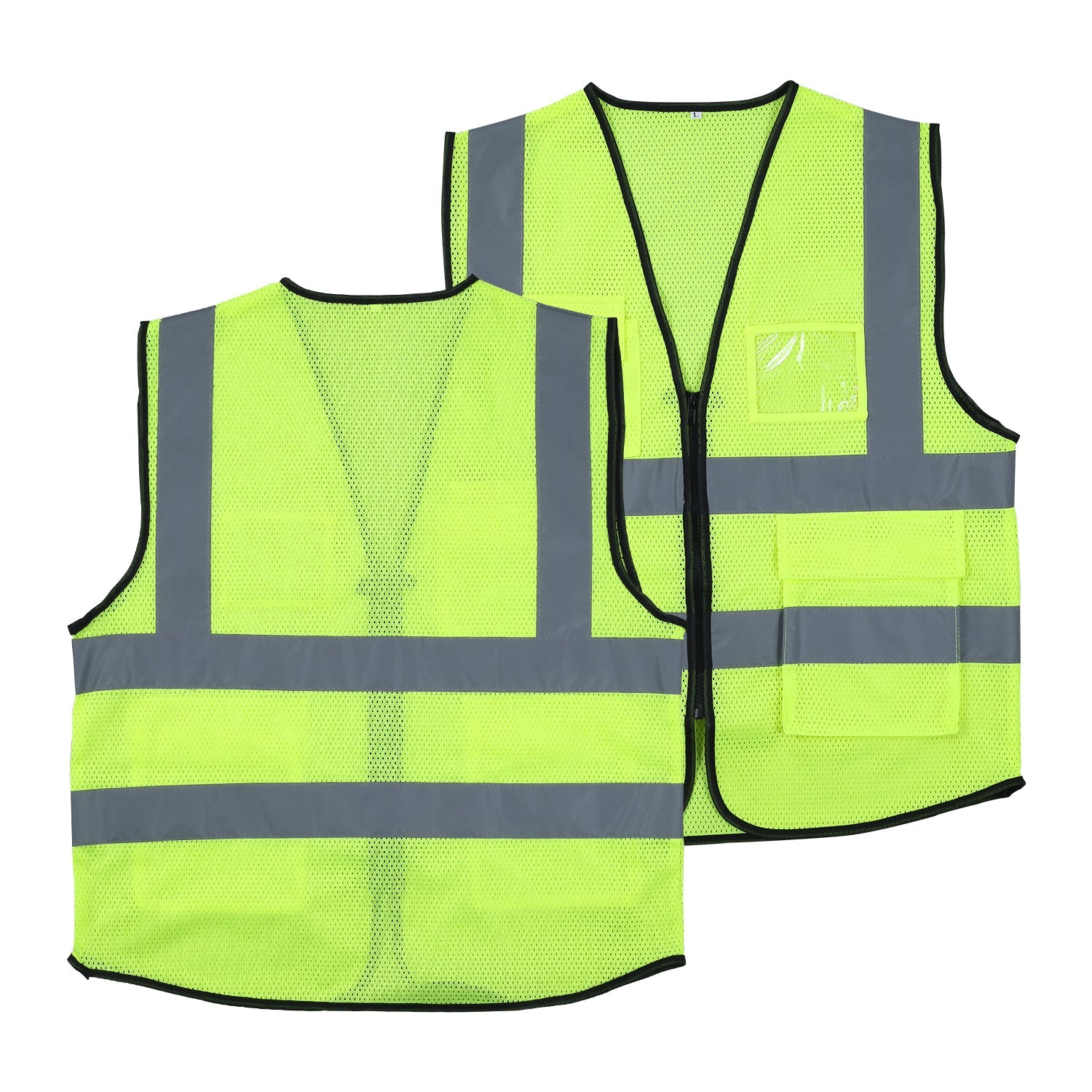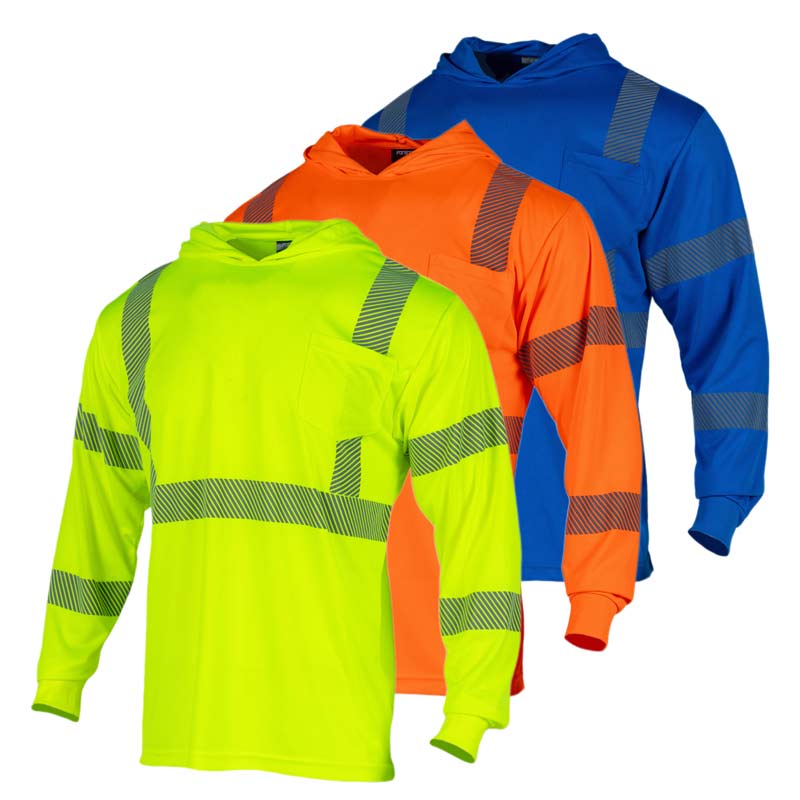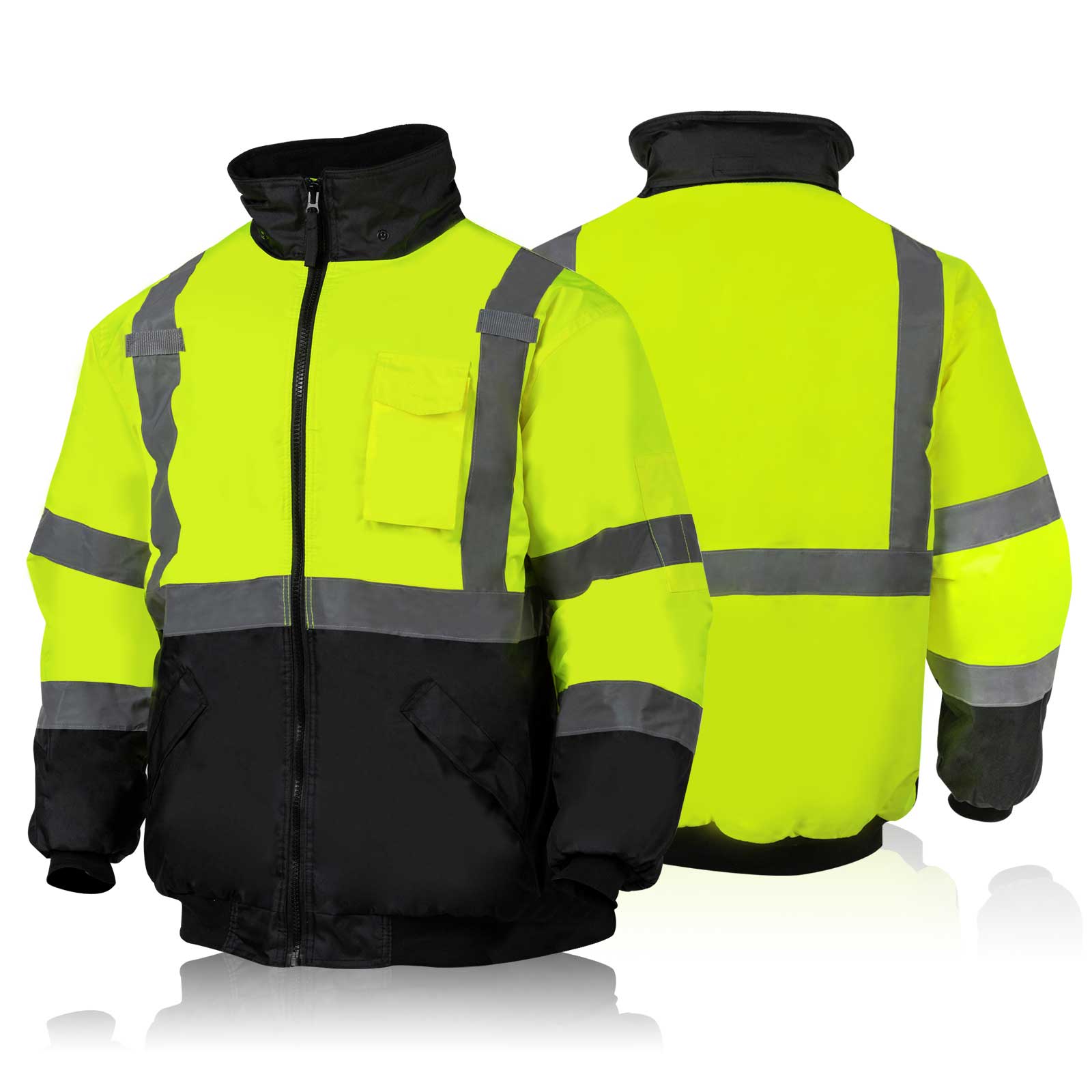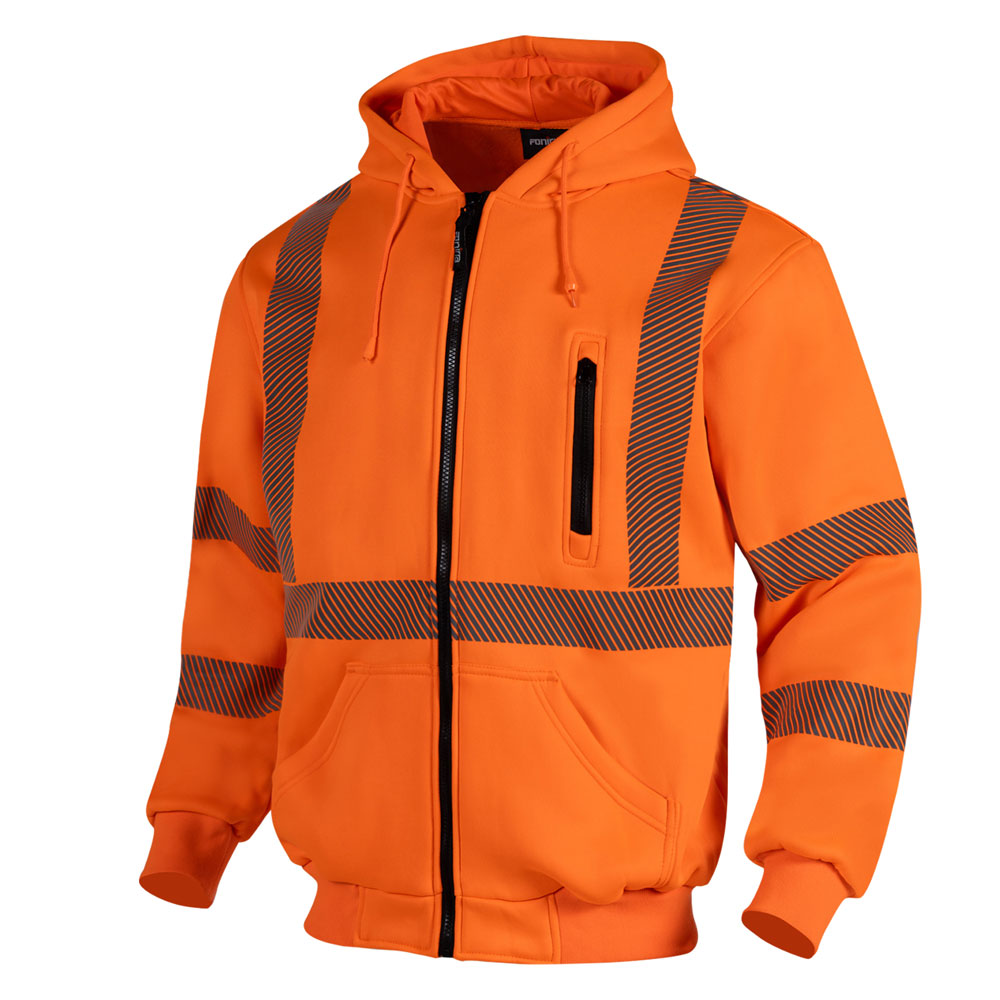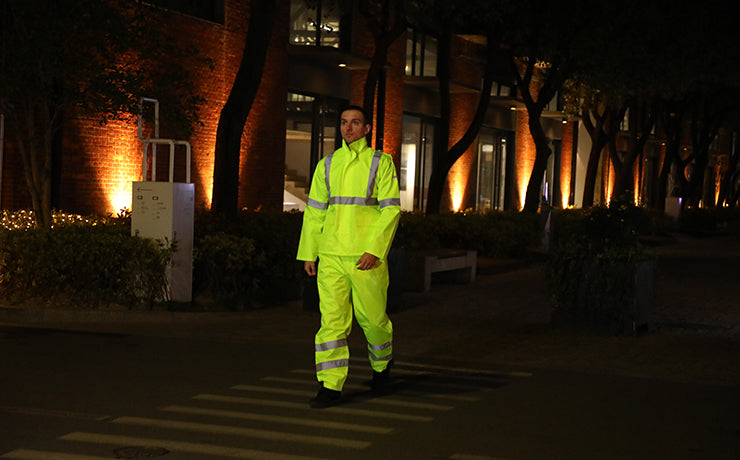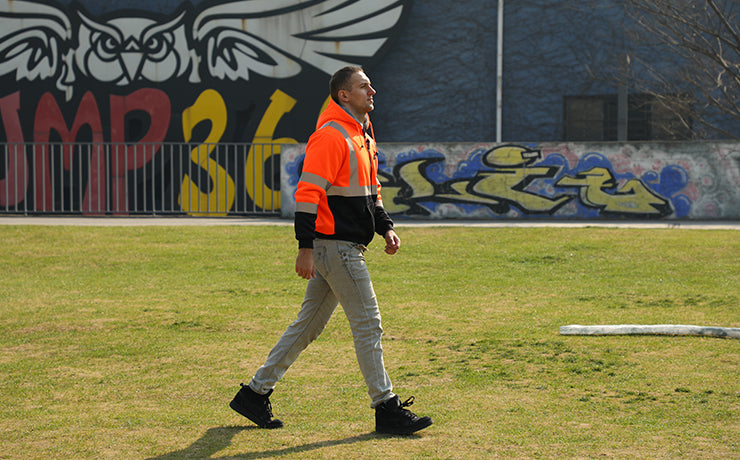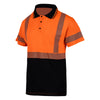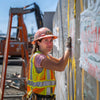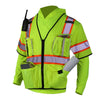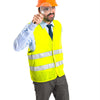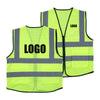6 Tips on Choosing the Right High Visibility Clothing (With Examples)
Did you know that 1 in every 5 construction fatalities happens due to being struck by a vehicle or machinery? If you are working on roadside construction projects, you're at a high risk of a struck-by accidents. But there are ways to make yourself and your crew more visible to vehicles and heavy machinery. High visibility clothing can make you visible at distances greater than a thousand feet, giving both you and incoming traffic enough time to reach safety.
However, not all high visibility clothing is equal. Your purchase of clothing can be overkill, an underestimation, or even illegal in some circumstances. Some should answer these questions before you choose the right high visibility clothes for yourself or your crew:
-
Where you work (Foliage, surroundings, colors, traffic)
-
When you work (day/nighttime)
-
In what conditions do you work (weather, safety hazards, tool and equipment use)
Based on these 3 questions, here are the 6 things you should look into before investing in reflective vests and jackets:
ANSI/ISEA: Class 1, Class 2, or Class 3?
We discussed the topic of ANSI/ISEA 107 classes in detail in our blog.
Before you decide what reflective clothing you should be buying for yourself and your team, you must first identify what safety regulations you must adhere to. Your state OSHA (Occupational Safety and Health Administration) decides whether your line of work or your working environment requires you to wear high visibility clothing.
One handy fact sheet created by Oregon OSHA summarizes who should be wearing reflective clothes at work. If you work in the below industries, you likely need to wear reflective clothing at some point during work hours:
-
Roadside construction workers and flaggers,
-
Truck drivers
-
Building construction crews,
-
Railway and airport personnel,
-
Surveyors,
-
Electricians and other utility workers
-
Policemen and other emergency responders
-
Warehouse workers
This doesn't mean that the rules are all the same for all of the above professions. While flaggers working at roadside construction sites at night will require the highest visibility, it is not as important if you're working at a warehouse or as a driver.
Once you determine whether OSHA requires you to wear high-vis clothing or not, you can then figure out how reflective your clothing should be.
These requirements are jointly set by ANSI and ISEA and should be compliant with ANSI/ISEA 107 standards. Although these standards get updated every few years like ANSI/ISEA 107-YYYY (where YYYY can be 2010, 2015, 2020, etc.), this doesn't make older publications of it less effective. In fact, the garment industry isn't too quick to catch up with the latest publications. So any high visibility vest or jacket that adheres to ANSI/ISEA 107 will be a great choice, given it's in the right class. So what are those classes?
There are mainly three classes of high visibility apparel: Class 1, Class 2, and Class 3. ANSI/ISEA 107 states that high visibility clothing is made out of 3 key parts: background material, retroreflective material, and combined-performance material. The classification of a high-vis clothing item is mainly dependent on the amount of background and retroreflective material used in the clothing.

In addition to these 3 classes, there are also 3 types: Off-road (O), Roadway(R), and Public Safety(P).
Depending on your working environment, you will need your clothing to adhere to one of these categories. Based on the jobs listed above:
|
Job |
ANSI/ISEA 107 Class and Type |
|
Roadside construction workers and flaggers |
Class 3 or 2, Type R |
|
Surveyors |
Class 3 or 2 Type R |
|
Electricians and other utility workers |
Class 3 or 2 Type O |
|
Building construction crews |
Class 3 or 2 Type O/R |
|
Policemen and other emergency responders |
Class 3 or 2 Type P |
|
Railway and airport personnel, |
Class 3 or 2 Type O/R |
|
Warehouse workers |
Class 1 Type O |
|
Truck drivers |
Class 1 Type O |
So before you purchase high visibility apparel, make sure you read the product descriptions to check whether the ANSI/ISEA 107 class is the right one for you.
High Visibility Clothing for Different Weather Conditions
There's nothing more frustrating than being expected to wear certain clothes at work that feels too wet, cold, or hot. In our experience, one of the main reasons why workers ditch their safety clothing is for the same reason too hot is a thing and too safe isn't. Reflective clothes aren't something you simply throw on top of your existing clothes. The right material type, thickness, and breathability, along with protection against elements (e.g. ribbed cuffs or a hoodie) is probably the biggest contributor to how comfortable your high-vis clothes will feel.

For example, winter-ready high-vis jackets should have strong wind protection and probably fleece inner lining to keep you warm. Having ribbed cuffs is probably also going to keep the warmth where it belongs too. But make sure you're not TOO hot at the end of the day, and keep in mind that sometimes wearing more layers under a thin high vis jacket is a better option for people who have to go in and out of vehicles or indoor working environments.
Lastly, depending on the temperature and your working environment, your high-vis gear can get covered in sweat and soil. The latter can actually cause you to fail an OSHA inspection if it means that your clothes aren't reflective enough because they are covered in mud. So make sure that what you're purchasing is washable, and that the reflective parts will hold up after many times of washing.
Luckily, our store has all the right high visibility vests, raincoats, shirts, and jackets for every occasion. For example, here's a winter jacket that our users love.
Features & Functionality
No work clothing is complete without having features that make your job easy. From having detachable hoodies to having easily accessible pockets, some many bells and whistles come with high visibility clothes (especially true for heavier or thicker garments).
One of the most useful things to have is pockets that will hold up to heavy use. Our customers carry all kinds of things in their pockets, often heavy and pointy stuff such as hammers, screwdrivers, wrenches, and the like. So having pockets with strong seams and zippers is crucial. No one likes going fishing in their pocket because of a hole.
The placement of the pockets is important as well, especially if you're working in confined spaces. Having a chest pocket is great if you need to constantly put and take out things from your pockets.
Colors
The first image that comes to your mind when someone mentions a reflective vest is probably something yellow and shiny. High visibility clothes ARE typically yellow, that's true, but there are many other colors to choose from: orange, black, green, red, and even pink! Having a unique vest color can mean that you can even wear them outside work and look good in them (with the added benefit of staying visible to traffic). Some of our customers use their vests while cycling on the weekends.

It goes without saying, you should check with your supervisor or the workplace standards set by ANSI/ISEA 107 to determine what colors are acceptable in your case. Your jacket should have high contrast with your environment to qualify for ANSI/ISEA 107. Depending on your working conditions, you might be restricted to using yellow/green, orange/red, or red-colored gear. Our product pages always mention the ANSI/ISEA 107 classes when applicable.

Size & Fit
Pay attention to the size of your high-vis gear, especially if you're wearing thick clothing underneath it. When it comes to high visibility jackets and raincoats, it's advisable to buy one size larger than you normally do. Also, people tend to gain a few pounds over the winter holidays. After coming back to work from vacation, you may find out that it is a little harder than usual to zip up your jacket.
Women account for almost a quarter of our visitors, so we make sure to keep stock of women's and unisex models. This pink high visibility jacket for women is especially popular with our female customers.
Logo Customization
If you're equipping a whole team with high-vis clothing, you may be wondering if you can print your own logo on the clothes. After all, the clothes are highly visible, and so will be your business if your logo is on them. We do offer logo customization and discounts for orders of as low as 20 pieces to support small and medium businesses. Get in touch with your sales team here to learn more.
There are a few things to consider when you're printing logos on high visibility clothing. The logo shouldn't interfere with the reflectivity of the garment. ANSI/ISEA 107 is very peculiar about how much logo area they allow, but our team can help you find the right balance between ANSI compliance and advertising potential.
So those were our tips for what you should be looking out for when buying high visibility clothing. If you still have questions, ask your supervisor, your local OSHA, or the safety experts here at Fonirra what's the best purchase for your needs.
-
Posted in
high-vis clothing, product guide

